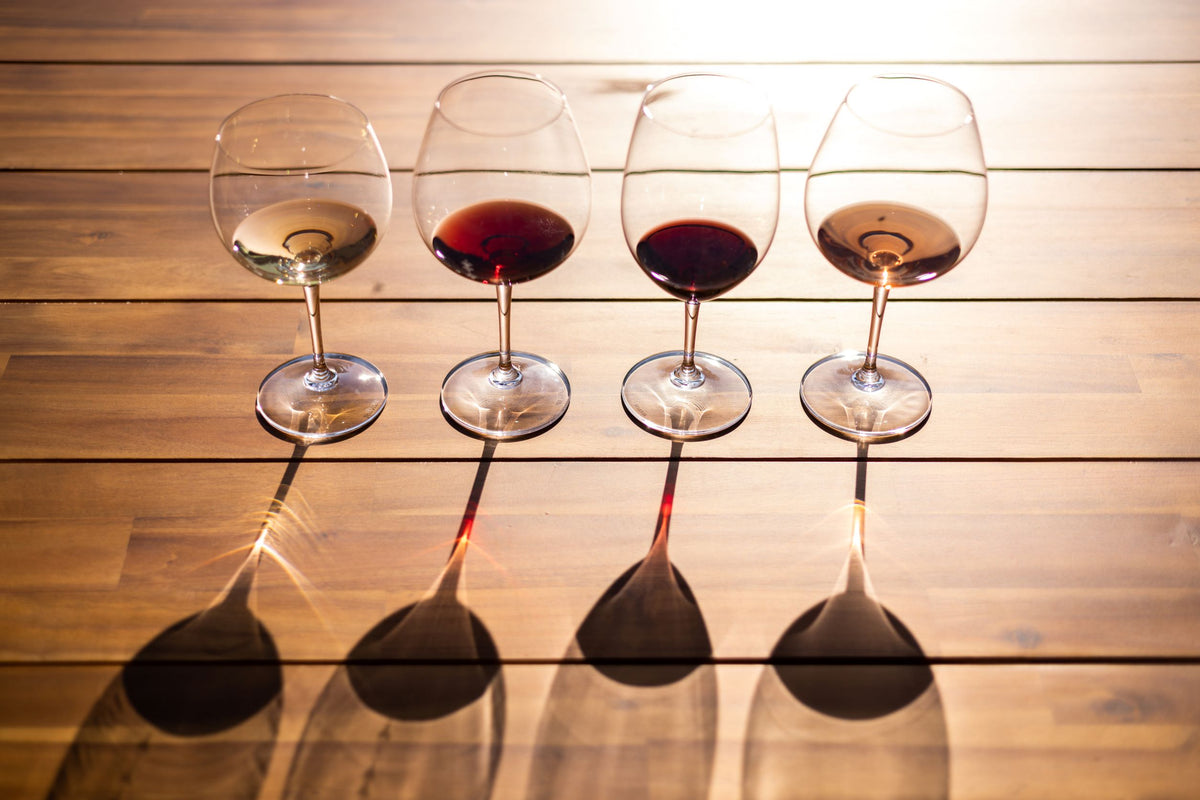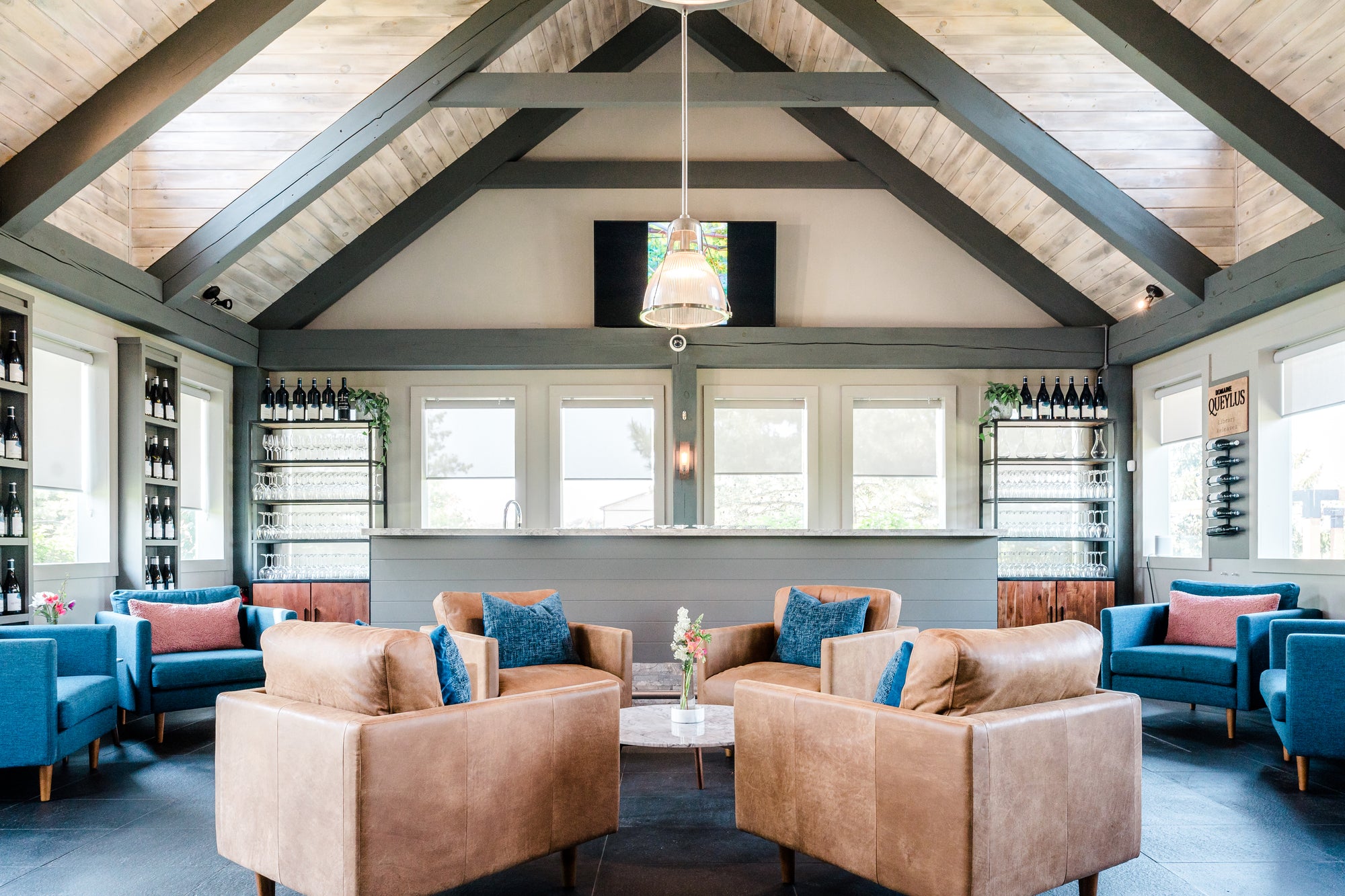About Us
Domaine Queylus is located atop the Niagara Escarpment in Ontario’s renowned winemaking region, the Niagara Peninsula.
Guided by the vision of our founding president, Gilles Chevalier, and a group of keen investors from Quebec, we began our winemaking story with our first vintage in 2010. Our winery retail store and tasting room followed in 2014. Selecting only varieties which we have identified as perfectly adaptable to our vineyards' complex soils and microclimate, we craft premium, cool-climate wines from Pinot Noir, Chardonnay, Cabernet Franc, and Merlot.
Combining our strong terroir with the dynamic experience of our Head Winemaker, Kelly Mason, we are able to achieve an exceptional elegance to our classically styled wines.
We invite you to join us in the tasting room to sample our carefully curated portfolio. In the summer, enjoy a glass with food pairings on our scenic patio while weather permits.
TERROIR, VITICULTURE & SUSTAINABILITY
MOUNTAINVIEW
Our Mountainview Vineyard, planted in 2008, is located in the Lincoln Lakeshore sub-appellation. It is 20 acres of Pinot Noir, Chardonnay, Cabernet Franc and Merlot planted on silty-clay, limestone-laced soils, with sand occurring at the northern end of the vineyard.
SIXTEEN ROAD
Our Sixteen Road Vineyard, located on the Domaine Queylus property, is 100% clay and planted with 2 acres of Marquette. Marquette is an American hybrid grape designed to survive the harsh winters we experience on our property away from the protection of the escarpment and the warming effects of Lake Ontario.
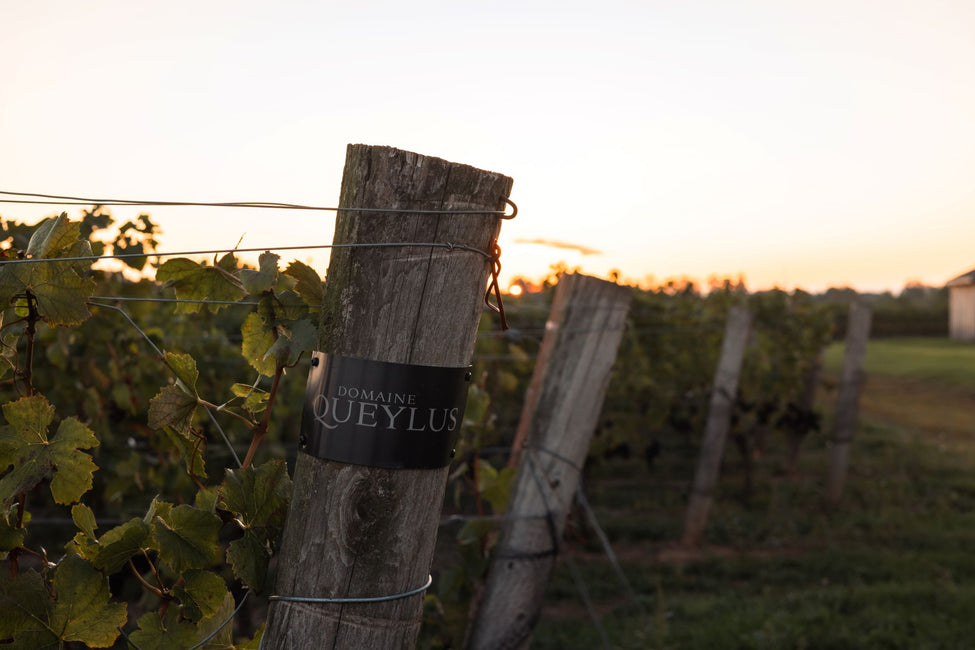
We believe in sustainable viticulture. The vines are grown organically (uncertified) out of respect for the precious, fragile soils of the Niagara Bench. No synthetic herbicides or insecticides are used. As of colour-change (véraison), all of our vineyards are covered with nets to protect the low-yielding vines. Each vineyard is cared for by hand, including pruning; shoot-thinning; shoot positioning; leaf pulling; green harvesting; and hand-harvesting. We also plant cover crops between the rows in the vineyard to naturally break up the soil for aeration and add vital nutrients such as nitrogen back into the soil.
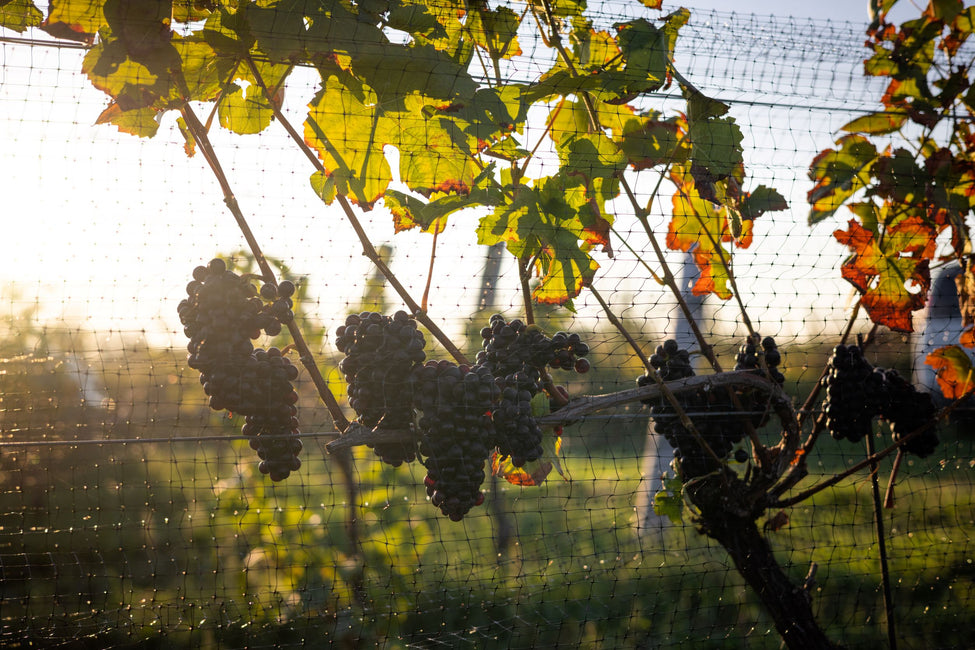
Vine Training: Guyot pruning, single and double, depending on the terroir and vigour.
Density of plantation: Domaine Queylus is planted very tightly for the New World. This high density per hectare produces competition among the vines, forces the roots downwards as opposed to laterally, and encourages them to ‘pump’ a maximum of terroir into the grapes. We plant 4445 - 5335 vines per hectare (1800 - 2160 plants per acre).
ÉLEVAGE
VINIFICATION & BARREL-AGEING
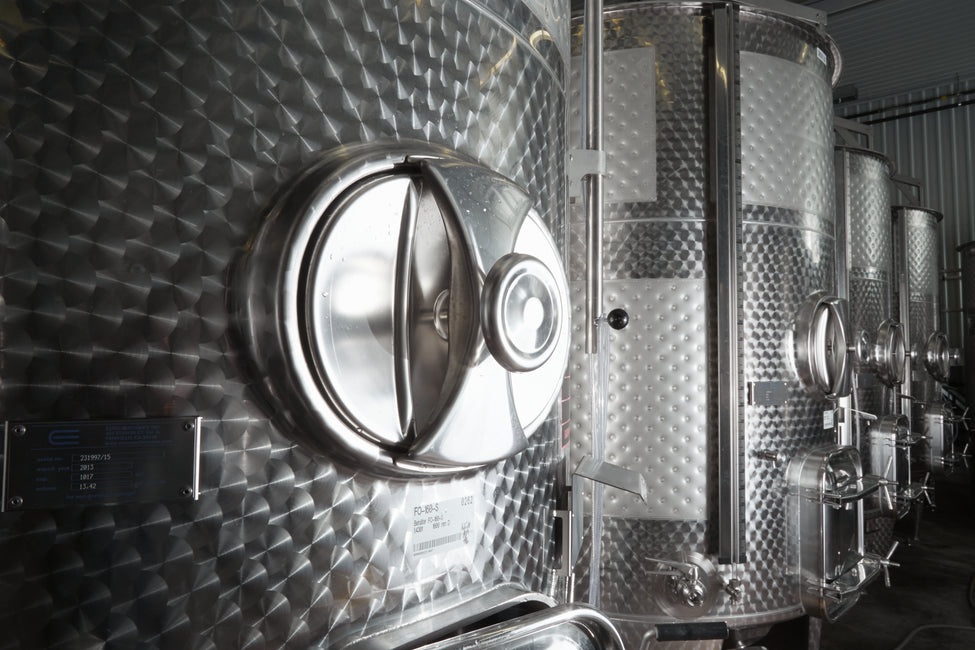
The Chardonnay grape bunches are manually sorted on a vibrating table, then whole cluster pressed. After a short passage in a chilled tank to clear the juice, the must is barreled and we let the tanks warm up so the naturally occurring indigenous yeast from the vineyard can slowly start the fermentation. We believe indigenous yeasts make the most textured and complex wines.
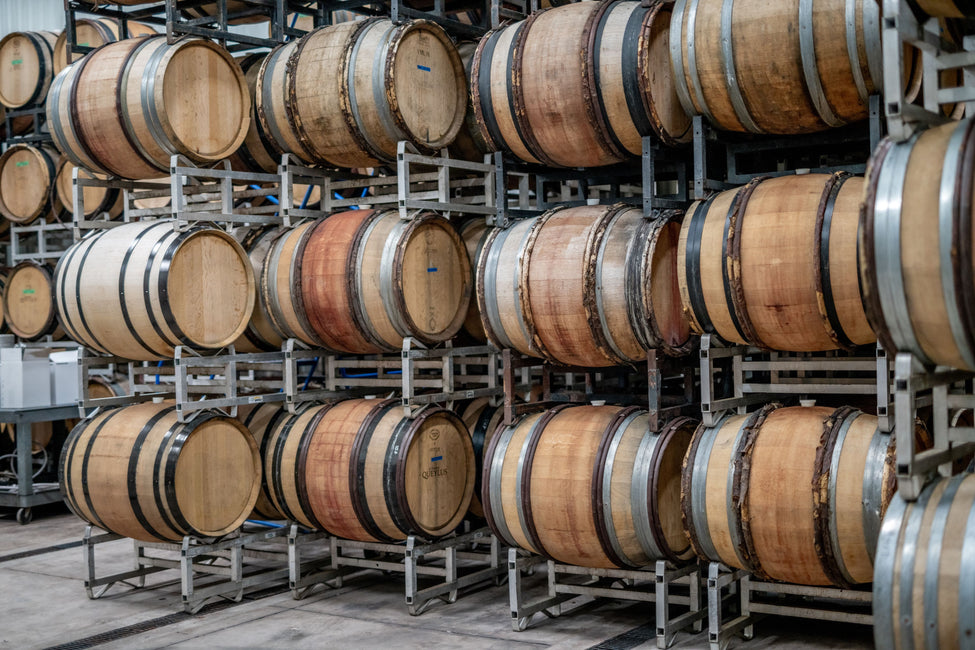
For our red varieties, the grape bunches are manually sorted on a vibrating table, then completely destemmed (but never crushed)– even the Bordeaux varieties are done this way. Destemming makes for more terroir-specific wines. After a short cold maceration, we let the tanks warm up and allow the fermentation to slowly start using indigenous yeast. After the fermentation, we leave the young wine on the skins for several days or weeks to more fully extract all the aromas, finesse and complexity from the grape skins, before pressing gently to separate the new wine from the skins.
All wine naturally goes through malolactic fermentation, usually by the spring following the harvest. The wine is then ‘élevé’ (patiently aged) in selected French oak barrels for 16 to 18 months. We use French oak made by coopers we have hand-selected over the years for their finesse and commitment to quality. The wood comes uniquely from forests in the northeast of France known for their tight grain and subtlety of perfume: Allier, Jura, Bourgogne, and the Vosges. These barrels (which are made of wood that has been air-dried for three years) are made by the Burgundian cooperages such as Damy, Master Coopers, Cadus, Billon, etc. To ensure that the terroir is at the forefront of the wine, only 20-30% of the barrels used are new. After bottling, the wines are aged a further 6 months before release to develop perfume and round out the velvety mouthfeel.
WINE CLUB
We invite you to share our passion for viniculture by joining our wine club.
Enjoy access to limited edition and vintage library wines, preferred access to pre-releases, and exclusive events throughout the
year.
